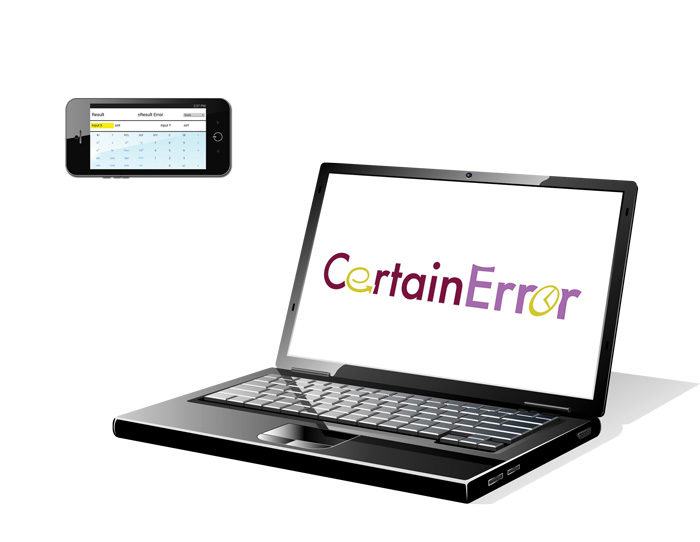 Our Company
Our Company
CertainError was founded by Dr. Ronald S. LaFleur with support from the Shipley Center at Clarkson University. The company’s current products include the CertainError Uncertainty Calculator app for iPhone and Android devices and CertainError Software, in three formats to enable integration of Duals arithmetic into existing applications. The website also offers educational materials in the form of a Help menu for the app, Tutorial videos on the CertainError YouTube channel and posts of Industries and recent projects.
About the Founder and the development of CertainError:
Ronald S. LaFleur is an Associate Professor of Mechanical and Aeronautical Engineering at Clarkson University. Starting in 1988 he taught a number of courses ranging from Thermal Science, Fluid Mechanics and Mechanical Engineering Laboratory to Design of Propulsion Systems. Starting in 2002 Prof. LaFleur was the principal architect of the Dept. of MAE’s new laboratory curriculum, increasing the number of experiments students perform and establishing content of ‘experimental methods’ topics such as error propagation and uncertainty analysis. The standard instructional format for error propagation is the ‘Differential’ method where multi-variable partial derivatives must be generated. Noticing the difficulties students had learning and using this method, and recognizing its short-comings, Prof. LaFleur began to research a new way to perform error propagation and uncertainty analysis that does not rely upon calculus, distributions and small error assumptions.
Without calculus, the methods initially started with information content, formatting numbers in two parts, one number being the mean value and the second number being the standard deviation. This two-number format was called a ‘dual’ carrying enough information to plot error bars. As the work progressed over a few years, the role of algebra became prominent. However, this was not your standard algebra and a new direction was indicated from ‘geometric algebra’ – that is the use of vectors as elements of an algebra, for example, a Clifford Algebra. Geometric algebra does not go far enough and was augmented by injecting ‘group theory’, hybrid representation, flexible ‘trans-axioms’ and going beyond vectors into abstract geometries. A pinnacle was reached with complete dual geometries needed for automatic error propagation and ‘geometric arithmetic’ capable of performing calculations with the error-geometry. This way ‘statistics’ is an application of geometric arithmetic and not a source for error. This allowed direct update of uncertainty analysis with automatic error propagation built-in. This approach is an alternative theory of statistics without a reliance on distributions and expected value theory. Overall, mathematics is an art form and you can invent new math, but the ‘geometric arithmetic’ has to be understood and be consistent as a system to provide a sound basis for practical calculating.
Beginning around 2012, the geometric-based-implementation of error propagation and uncertainty analysis methods had matured enough and its techniques and algorithms verified, to be disclosed to Clarkson University and form the basis for a US patent. The initial release was two (out of four) methods that used the hybrid number&geometry representation, namely the Chordals and Duals. Wider communication led to practical applications in a range of fields such as science, engineering, finance and medicine. Initial work showed the superior performance of the Duals arithmetic. Successful implementations were completed in spreadsheet form, object-oriented programming form and text language form. The resulting software products allow implementation of Duals arithmetic in larger applications. Code conversion was also prototyped to automatically change an existing text-based computer code (such as C++, MATLAB and Python) into one that uses Duals arithmetic.
Implementation of Duals arithmetic, to replace the traditional arithmetic used on scientific calculators, led to the writing of the CertainError Uncertainty Calculator app that includes different uncertainty methods such as Interval, Monte-Carlo, Differential, Chordals and Duals. To implement scientific functions in Duals arithmetic, two proofs were completed and implemented as trans-imaginary number versions of Chordals (effectively bringing the first two geometric methods together). The CertainError Uncertainty Calculator app was verified with technical tests and with applications from freshman-level science courses and economics problems.
Looking forward beyond the Chordals and Duals technology lies the more sophisticated techniques of Multi-duals and Geoms (working names, being developed by CertainError). These algorithms require significantly more chip or computer resources but can squeeze-out the very best uncertainty information. It is expected that future products based on these new techniques will be for applications where the very highest quality of error tracking and uncertainty knowledge is required and there are resources available for practical implementation.
